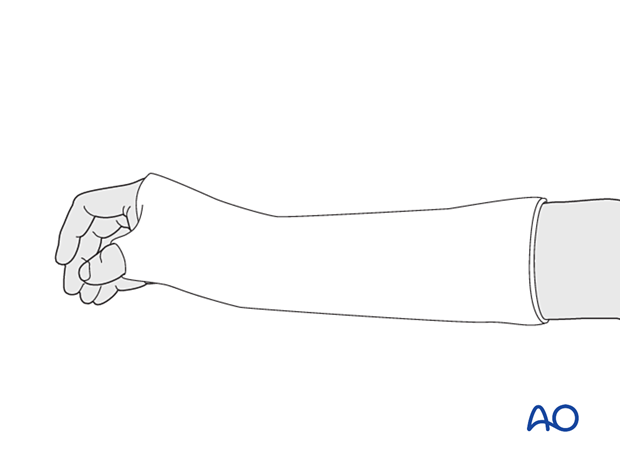ORIF - Scapholunate reduction and ligament repair
1. General considerations
Early diagnosis and open ligament repair are the gold standard for treating a scapholunate ligament injury.
The scapholunate ligament is repaired, eg, with a suture anchor and temporary K-wire joint transfixation.
Check for further ligament injury (of stage III or IV).
Scapholunate dissociation may also be treated arthroscopically or arthroscopically assisted. However, these techniques:
- Require appropriate resources including instrumentation
- Are only acquired through appropriate training and experience
- Have not been proven to provide significant advantages for reconstruction
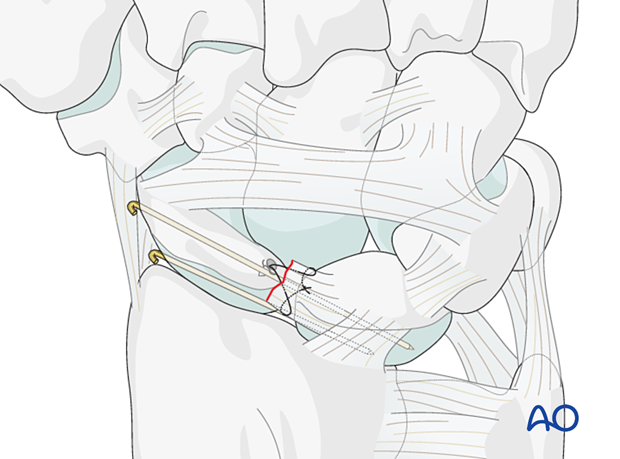
2. Patient preparation
The patient is usually supine with the arm on a radiolucent side table.
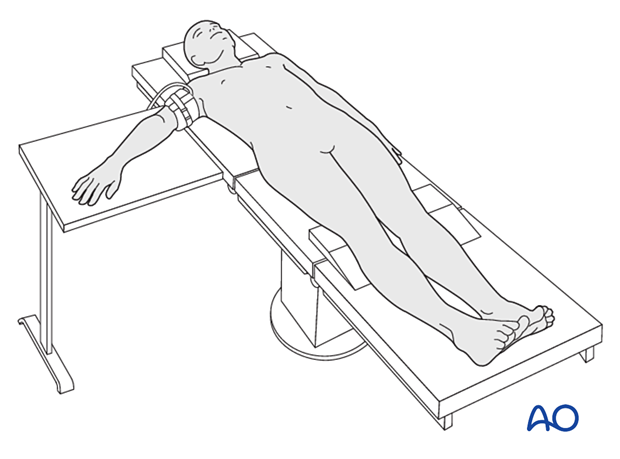
3. Approach
For this procedure, a dorsal approach is typically used.
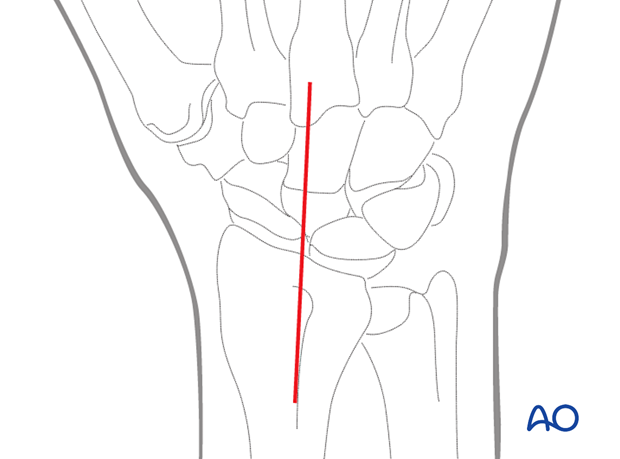
4. Reduction
Insert a joystick K-wire into each the scaphoid and the lunate.
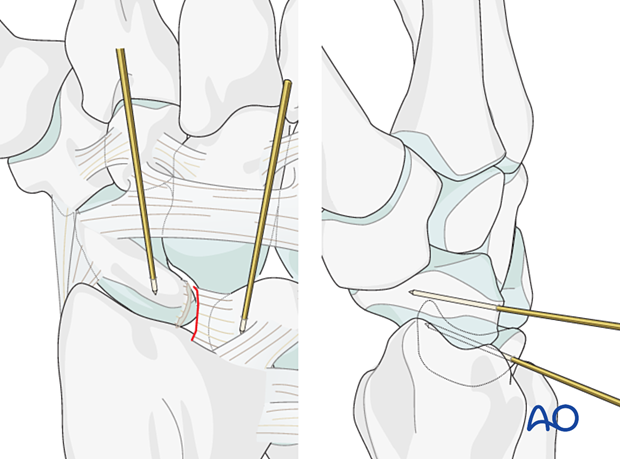
To reduce the scapholunate joint, extend the scaphoid, flex the lunate, and then close the gap.
Use pointed reduction forceps to hold the reduction.
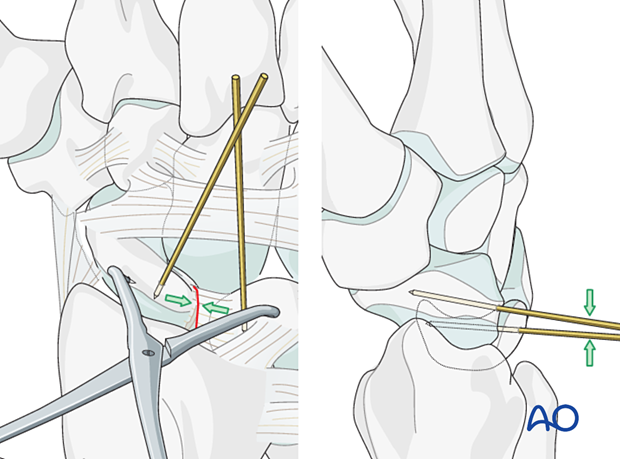
Check the correct scaphoid and lunate alignment on a lateral view. The lunate should be in neutral position. The angle between the long axes of the scaphoid and lunate should be less than 60°.
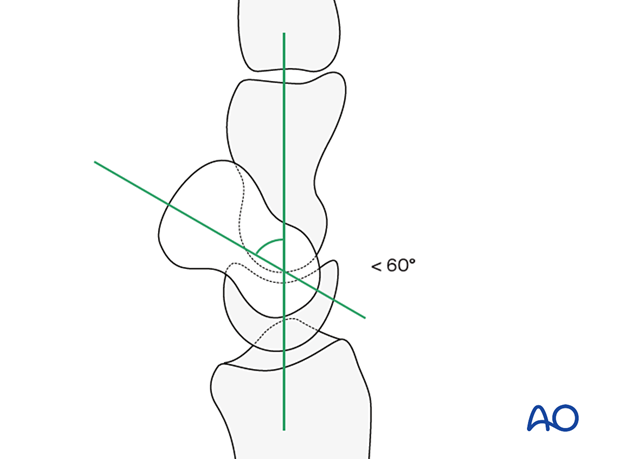
5. Transfixation of the scapholunate joint
Under image intensification, advance two K-wires percutaneously from the scaphoid into the lunate.
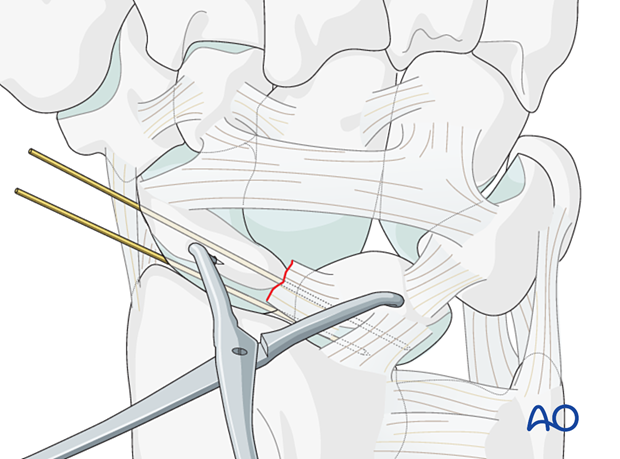
Option: transfixation of scaphocapitate joint
The stability of the wrist can be enhanced by inserting a K-wire from the scaphoid to the capitate.

6. Scapholunate ligament repair
Assessment of dorsal and proximal ligament remnants
In most cases, the scapholunate ligament is avulsed from the scaphoid and remains attached to the lunate.
Freshen the avulsion site to improve contact and healing.
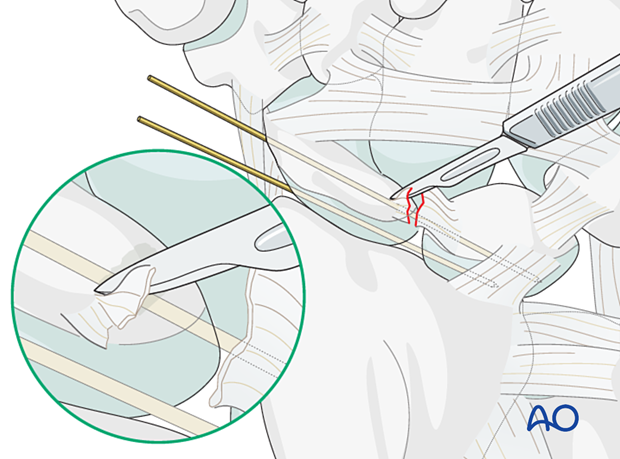
Insertion of a suture anchor
Insert the bone anchor dorsally into the debrided area of the scaphoid (or in the lunate if the ligament is avulsed from that bone).
The entry point for the anchor must be placed in such a position that the line of pull of the suture is slightly oblique to resist rotational forces between both bones.
Often, one anchor will be sufficient, but occasionally two anchors will be needed.
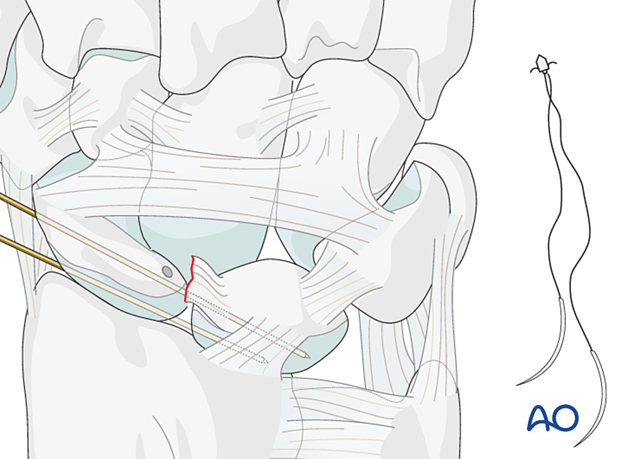
Insert the anchor suture into the torn end of the ligament and tie the anchor sutures in the ligament.
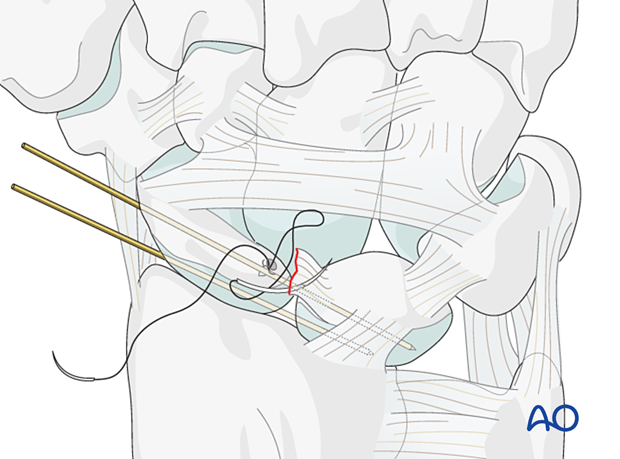
Direct suture fixation
If there is a mid-substance tear of the ligament, suture it directly.
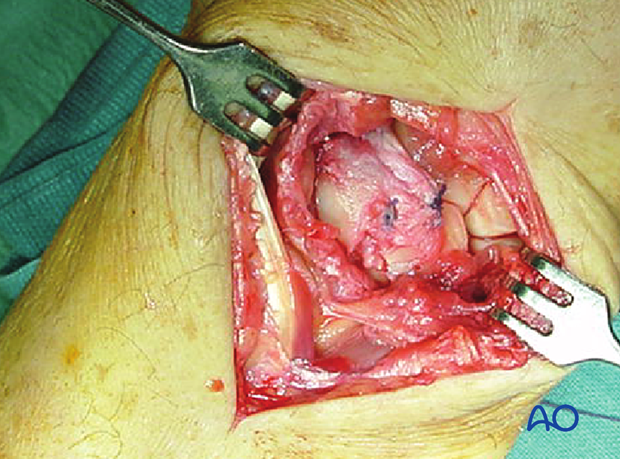
Option: transosseous ligament refixation
If bone anchors are unavailable, attach the avulsed ligament with sutures passed through small tunnels drilled into the proximal pole of the scaphoid, as illustrated.
There is a risk of cortical fracture of the scaphoid, which makes the treatment complicated.
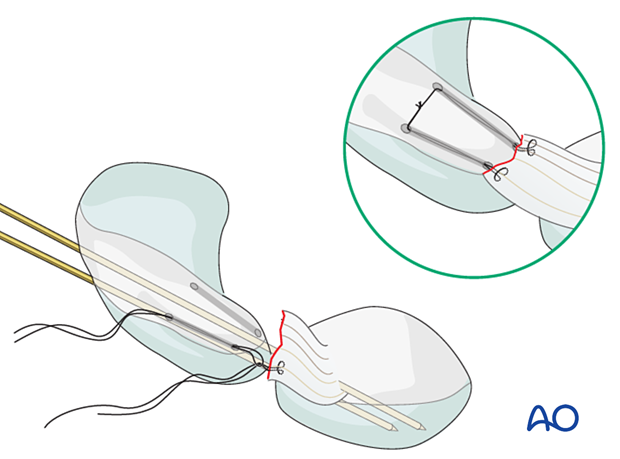
7. Final check
After final confirmation of accuracy of realignment, using image intensification, cut and bend over the K-wires, so they do not protrude through the skin.

8. Aftercare
The aftercare can be divided into four phases of healing:
- Inflammatory phase (week 1–3)
- Early repair phase (week 4–6)
- Late repair and early tissue remodeling phase (week 7–12)
- Remodeling and reintegration phase (week 13 onwards)
Full details on each phase can be found here.
Pain control
To facilitate rehabilitation, it is important to control the postoperative pain adequately. To do so, the following should be considered:
- Management of swelling
- Appropriate splintage
- Appropriate oral analgesia
- Careful consideration of peripheral nerve blockade
Immediate postoperative treatment
Immobilize the wrist with a well-padded below-elbow splint for 2 weeks.
Splinting helps with soft-tissue healing, especially of the ligaments cut during a palmar approach.
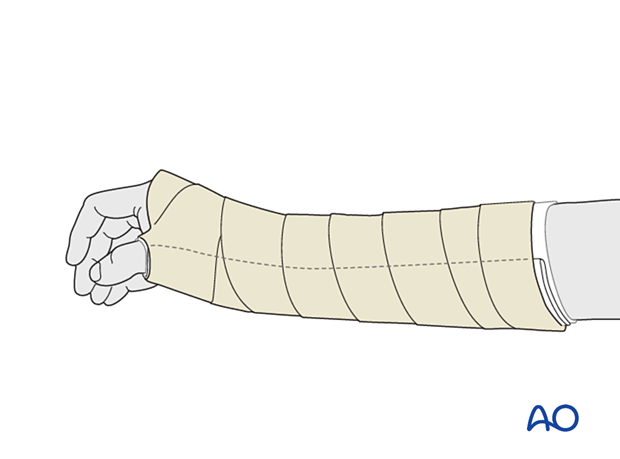
Follow-up
After 2 weeks, remove the sutures, check the skin over the K-wires, and apply a below-elbow scaphoid cast with slight dorsiflexion at the wrist for 6–8 weeks. Then the K-wires are also removed with appropriate pain control.
Check the skin regularly every 2 weeks in the outpatient clinic.
